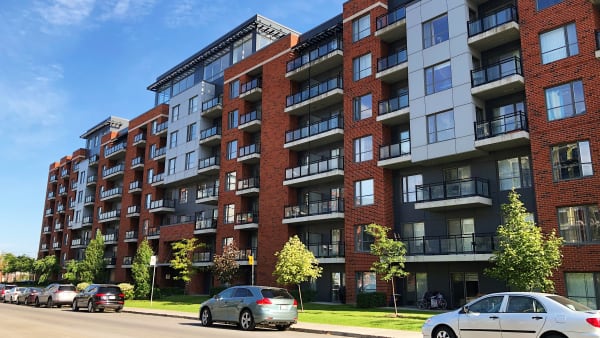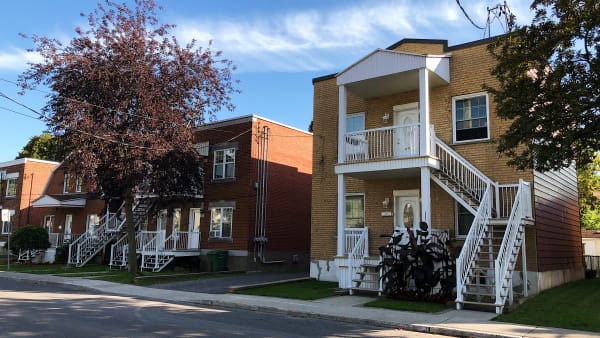DiscoverLaSalle
Here is an unobstructed view of the St. Lawrence River, dynamic commercial streets, many parks and 25 km of bicycle paths.
Here is life along the river right within the big city—where nature meets urban areas. Here, in the southwest part of the island of Montréal, you will find a pleasant living environment, where everything is nearby, from shopping to impromptu picnics.
Here is a community of great wealth. Whether you are a long-time resident or a newcomer to Canada, you will find that LaSalle stands out for its wealth of openness and diversity.
Welcome to your home!
History
5 historical facts about LaSalle
- Formerly Ville de LaSalle (the city of LaSalle), it was on January 1, 2002 that LaSalle became a borough, joining the new Ville de Montreal (the new city of Montréal). It is named after the first seigneur in the area: explorer René-Robert Cavelier de La Salle.
- The Lachine Rapids are located in LaSalle. Surprising, isn’t it? This name comes from the fact that during the French Regime, in the 19th century, the heart of the parish of Lachine was located on the current territory of LaSalle.
- In 1912, when it was incorporated as a municipality, LaSalle was known for its agricultural way of life and had many orchards. One hundred years later, it is a major industrial centre and one of Montréal’s main commercial hubs.
- The symbol of LaSalle is the Fleming Mill, which dates back to 1827. This witness to human work clearly characterizes LaSalle’s industrial side, LaSalle residents’ attachment to their history and their strong sense of belonging.
5. LaSalle’s motto, as it appears under its coat of arms, is Obstantia Amovet, which means “He pushes away obstacles, he casts aside difficulties”.
Attractions
- 2cultural venues
- 1library
- 1large park along the Rapids
- 40neighbourhood parks
- 2arenas
- 5outdoor rinks
- 1aquatic complex
- 7outdoor swimming pools
- 17splash pads
- 2community gardens
- 21tennis courts
- 25km of bicycle paths
- 1mill
- 1higher education institution
- 1hospital centre
- 2major road links
- 400companies
- 1000places of business
Neighbourhoods

Angrignon Est sector
Nestled in the heart of essential services for the family, this high-rise residential project, with a view of downtown and the St. Lawrence River, is the most urban and modern part of LaSalle. Close to everything, it has been designed to favour both public and active means of transportation.

Highlands sector
Located on the shores of Lake Saint-Louis, the Highlands sector is steeped in history. A number of historic sites are located on its territory, including the Fleming Mill, the emblem of LaSalle. The picturesque features of this sector are its narrow streets, green spaces and houses that reflect the changes in the area over time. Borough Hall and the commuter train station are also located here.

Village des Rapides
This residential sector, located at the eastern end of the Borough, between the St. Lawrence River and the Aqueduct Canal, is easily recognized by its houses dating back from the 1920s to the 1950s. The name “Bronx” is commonly used due to the purchase of several lots in this area in 1919 by New York brokers around rue Broadway.

Riverside sector
Parc Riverside, in particular, is what makes this residential area so well renowned. It is a privileged place to have fun with the family, enjoy the attractions of nature or take part in outdoor recreational activities. It includes the Éloi-Viau and Keith-Ewenson stadiums as well as the Fritz-R.-Prévost athletics track.

Angrignon commercial hub
The Carrefour Angrignon sector and the boulevard Newman thoroughfare form one of the main centres of activity in the southwest and one of the major commercial areas in the western part of the island of Montréal.

Waterfront sector
The St. Lawrence River, the Lachine and Aqueduct canals… LaSalle is characterized by its waterfront providing breathtaking panoramic views along bicycle paths.
Key figures
- 90 975 population
- 16.3 km²area
- 4,724 inhabitants per km²
- 516,300 $median value of property
Need help?
Contact us if you have questions.
Are you sure you want to leave this page?
This page is not available in English. You will be redirected to the English home page.